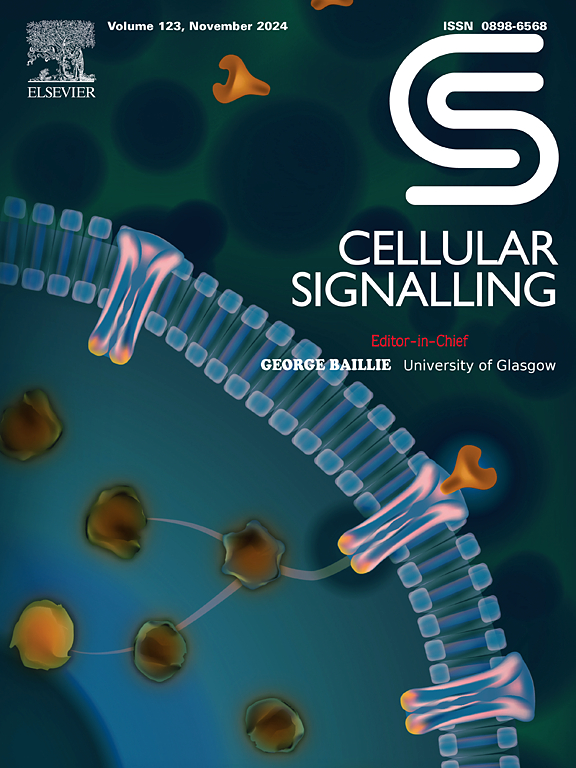MINT3 promotes STING activation and facilitates antiviral immune responses
IF 4.4
2区 生物学
Q2 CELL BIOLOGY
引用次数: 0
Abstract
Stimulator-of-interferon genes (STING) translocation is the rate-limiting step in the cGAS-STING signaling which detects cytosolic DNA and produces type I interferons. However, the mechanism by which this process is modulated remains to be further clarified. In the present study, we identified munc18–1-interacting protein 3 (MINT3) as a positive regulator of STING signaling. MINT3 promotes type I interferons production induced by herpes simplex virus-1 (HSV-1) infection and ISD or cGAMP stimulation in mouse peritoneal macrophages. Deficiency of Mint3 greatly inhibited STING and IRF3 activation in macrophages. Mint3 knockdown also attenuated STING and IRF3 activation in macrophages, human THP-1 cells, and RAW264.7 cells. Mechanistically, MINT3 interacted with STING, selectively enhanced its K63-linked polyubiquitination and facilitated STING translocation to the Golgi, resulting in the enhancement of the STING and TBK1 interaction. Furthermore, MINT3 also facilitated HSV-1-induced innate antiviral immune responses and impaired HSV-1 replication in vitro and in vivo. Interestingly, we showed that the expression of MINT3 was dramatically elevated during HSV-1 infection, and ISD stimulation in macrophages. Thus, we have revealed a feedback mechanism for the regulation of the cGAS-STING pathway, providing a promising therapeutic target for the treatment of disorders triggered by aberrant STING activity.

min3促进STING激活并促进抗病毒免疫反应
干扰素刺激因子基因(STING)易位是cGAS-STING信号传导的限速步骤,它检测胞质DNA并产生I型干扰素。然而,调节这一过程的机制仍有待进一步阐明。在本研究中,我们发现munc18 - 1相互作用蛋白3 (MINT3)是STING信号传导的正调节因子。MINT3促进小鼠腹膜巨噬细胞由单纯疱疹病毒-1 (HSV-1)感染和ISD或cGAMP刺激诱导的I型干扰素产生。缺乏Mint3可显著抑制巨噬细胞中STING和IRF3的激活。Mint3敲低还能减弱巨噬细胞、人THP-1细胞和RAW264.7细胞中STING和IRF3的激活。在机制上,MINT3与STING相互作用,选择性地增强其k63连锁的多泛素化,促进STING向高尔基体的易位,从而增强STING与TBK1的相互作用。此外,MINT3还促进了HSV-1诱导的先天抗病毒免疫反应,并破坏了HSV-1在体外和体内的复制。有趣的是,我们发现在HSV-1感染和ISD刺激巨噬细胞时,MINT3的表达显著升高。因此,我们揭示了cGAS-STING通路调控的反馈机制,为治疗由异常STING活性引发的疾病提供了一个有希望的治疗靶点。
本文章由计算机程序翻译,如有差异,请以英文原文为准。
求助全文
约1分钟内获得全文
求助全文
来源期刊

Cellular signalling
生物-细胞生物学
CiteScore
8.40
自引率
0.00%
发文量
250
审稿时长
27 days
期刊介绍:
Cellular Signalling publishes original research describing fundamental and clinical findings on the mechanisms, actions and structural components of cellular signalling systems in vitro and in vivo.
Cellular Signalling aims at full length research papers defining signalling systems ranging from microorganisms to cells, tissues and higher organisms.
 求助内容:
求助内容: 应助结果提醒方式:
应助结果提醒方式:


